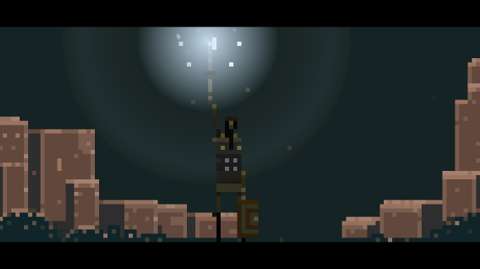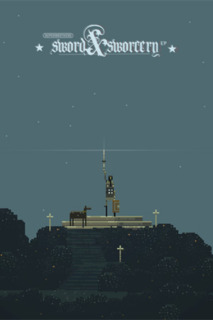INTRO:
The following may seem like yet another typically boring intro for a review article. Instead of hitting the ground running talking about the game, it goes on a history lesson.
Yet, there has to be a reminder here that there is a reason to look back into the past and review things – and that is to see through the glamour of glory.
It just so happens that the cumbersomely-named Superbrothers: Sword & Sorcery EP has a lot of glory, enough to disguise the fact that it is not exactly a game known for the sophistication – or lack thereof - of its gameplay.
Rather, it was perhaps better known for offering jaded game consumers something different, especially back in 2011 when so many high-profile games tried to be Call of Duty, Angry Birds or other franchises which were (or still are) massively profitable.
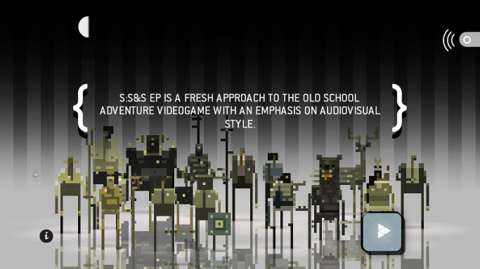
That something different was immersion in a deceptively simple yet elegantly presented gameplay experience. Sword & Sworcery has doles of that.
It was so highly regarded that it, together with other high-profile indie games, brought along a “renaissance” of sorts to video games, as the proponents of indie games would trumpet. Yet, this false dawn eventually led to the creation of many games which prized delivery of emotional and highly subjective experiences over sophistication in gameplay.
If this is to be seen in a bad light, Sword & Sworcery deserves blame for having contributed to this.
PREMISE:
If one rifles through the documentation of credits and development history which came together with the game, one would know that the game has a setting which is loosely based on Scythian mythology. Its setting is also apparently influenced by the likes of Legend of Zelda, as can be seen from the MacGuffins in the story of the game.
Anyway, the player takes on the role of the minder of a Scythian warrior, who is on a mission to retrieve and destroy a dangerous artefact. She is apparently very brave – brave enough to die for her cause, as the player would soon found out.
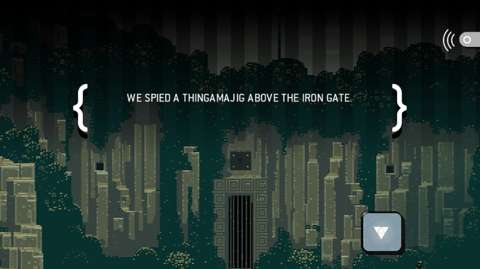
Along the way, she has to fight some enemies who bar her way, as well as deal with the consequences of tampering with magical objects best left sealed.
BUTTONS:
Sword & Sworcery originated on mobile platforms, i.e. platforms for touch-screen-using handheld devices. This much can be seen from the large buttons in the user interfaces.
On the computer platforms, the controls have been modified to accommodate the use of the mouse. The mouse cursor is small enough such that clicking on the large buttons should not even be a problem. Of course, the relatively large sizes of the buttons would make the origins of the game clearer, if they are not clear enough already.
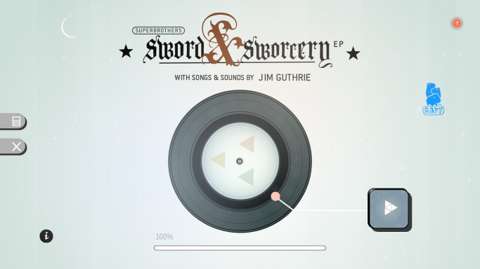
Interestingly, Sword & Sworcery has features to prevent players from ruining their experience through their utter clumsiness.
In the menus, most buttons, when clicked on for the first time, expand to even bigger versions of themselves with text labels and maybe even tooltips. To confirm a desired action, the player has to click for a second time. In actual gameplay, the buttons are small, to prevent the player from accidentally clicking on them when he/she is trying to click away on something in the environment instead.
MOVEMENT:
As the disembodied minder of the other clueless and brave Scythian warrior, the player must move her around so that she can go to where she needs to be – and away from danger of course.
This involves a lot of clicking – specifically double-clicking. This is not overtly taught to the player. Instead, in the first few minutes of the game, strings of text which say “tap tap” appear over the sprites of objects. (In the case of the version of the game for the computer platform, some – but not all – of these text strings have been updated to say “click” instead of “tap” instead.)
It would be a dim-witted player indeed if he/she could not figure out the message which these text strings are trying to convey. (The message is that double-clicking at a location compels the heroine to go to this location.)
However, the other method of movement is taught through more overt lessons, namely clearly worded instructions which appear on-screen. This other method requires the player to hold down the mouse button until the cursor turns into a ring of radial lines, after which the Scythian would follow the ring wherever she can.
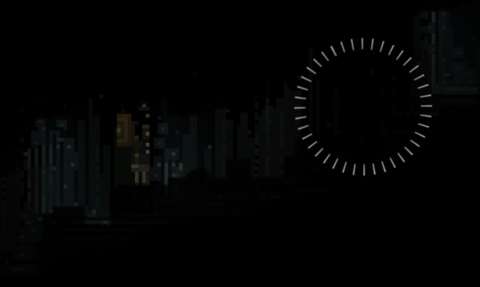
Having to double-click or hold down the mouse button means that moving the Scythian is not an immediate matter. This is not always an issue, but there are a couple of scenarios of particular urgency in which these control schemes are not conducive to gameplay.
To describe these scenarios would be to mention spoilers, but it should suffice to say that the player would be a very forgiving person indeed if he/she is not cussing at the controls in these moments.
EXAMINING OBJECTS & TALKING TO CHARACTERS:
For better or worse, double-clicking is also used to talk to characters and examine objects in the environment. The game checks whether the player is double-clicking in the proximity of objects and characters; if the player is, the game decides that the player wants to examine objects or chat up characters.
This can be annoying, if all the player wants is to get close to something without interacting with it. To cut the game some slack though, there usually is no other reason to get close to something or someone than to examine or talk to him/her/it.
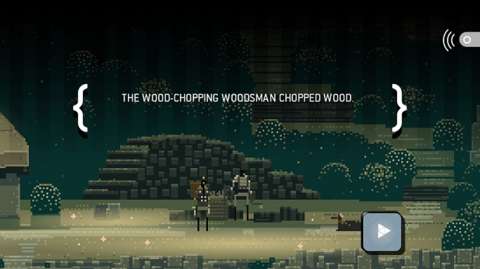
SCREEN-SCROLLING:
If the player fiddles around with the keyboard, he/she would discover that he/she can scroll the screen by using the direction keys.
This is convenient if the player wants to look ahead or around for collectibles, or to examine far-away objects. However, the camera is usually zoomed out far enough to make screen-scrolling unnecessary most of the time.
ZOOMING:
Speaking of the camera, for every scene, there are at least two levels of zoom. One of these is a close-up, which is usually more useful for having the Scythian interact with things. The other is a far-out view of the current scene, which is more useful for looking ahead of the Scythian.
DIRECTION INDICATORS:
Early on in a playthrough, the game provides indicators in the form of chevron arrows to direct the player to where the Scythian needs to go in order to progress in her quest (or her “woeful errand”, to use the game’s own cheeky take on the story-telling trope of righteous missions).
This can seem a bit hand-holding, but eventually they disappear after the prologue.
The visual indicators for screen-transitioning zones are more appreciable. These zones appear at the edges of a scene, particle effects exuding from them to indicate that they are exits.
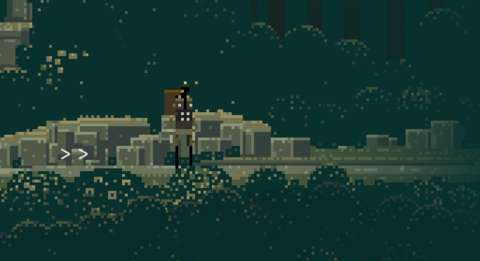
PROGRESS APPRAISAL:
There is a fourth-wall-breaking aspect to the story. This portion can be seen in the interludes between chapters (or “sessions”, to use the game’s own parlance).
The player’s progress through the game would be appraised by a person who describes himself as someone who knows the motives of the game. This person - known in-game as the “Archetype” - will make some remarks about typical tropes in video game stories – remarks which may seem uncomfortable to more sensitive players.
At the time of this game, such self-awareness in a game is not exactly expected from such a game, specifically a game which originated from a mobile platform. Considering that the mobile platforms have a reputation for having games which are frivolous, whimsical and uncomplicated, that Sword & Sworcery would pose such heavy thoughts was something which made it very different.
It has to be said here that the game appears to have been made for the player who spends short periods of times with quick-to-play games. This is apparent from the metaphorical bite-sized chunks which divide the player’s progress in the game and more overtly, the Archetype’s suggestions that the player takes a break after completing each session.
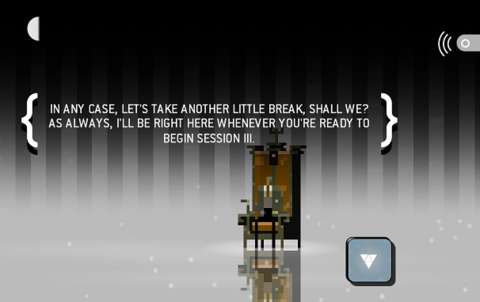
Indeed, if a player is determined, he/she can complete the game in just a day, and maybe even find all the secrets within the game in the same day (especially with a guide).
If the player is looking for a long experience, Sword & Sworcery does not offer it.
FIGHTING:
Eventually, the player would come across what passes as combat in the game. The game originated on the touch-screen mobile platforms, so the player should not expect anything complex.
In fact, a cynical player may consider that the combat in the game is little more than quick-time events.
Anyway, whenever the Scythian is accosted by an enemy (which becomes rather frequent later), or whenever she challenges a waiting adversary (which is done by right-clicking), the player goes into combat mode.
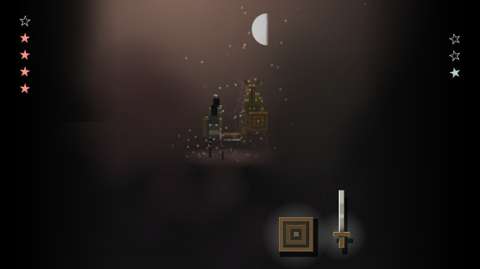
In combat, the player is shown two huge icons which depict the actions which the Scythian can perform: these are mainly raising her shield and slashing with the sword.
Pressing on the appropriate icon has the Scythian performing said actions. However, the player must time these actions correctly; to do so, the player has to observe the animations of the Scythian’s adversary.
Conveniently, all of the Scythian’s opponents have “tells” which indicate when they are going to attack. These tells help the player know when to perform an action to negate incoming attack and perform a counter-attack.
Holding up the shield all the time only works on early-game enemies. Enemies which appear later simply get past poorly-timed blocks.
Blocking is not enough to defeat most enemies though. The player needs a well-timed block or a few to stagger an enemy long enough for the Scythian to hit it with her sword, else the enemy jumps back to its original position.
In fact, waiting for the enemy to fumble an attack before counter-attacking is generally the way to defeat any adversary other than the Trigons (more on these later). This is because the Scythian cannot hit any opponent who is standing where it was before attacking.
“SWORCERY”:
Early in the game, the player is introduced to the titular concept of “sworcery”. Supposedly, the Scythian has the knowledge of performing magic using her sword, or what passes for her gauntleted hands, in the case of the more ritualistic “sworcery” techniques.
The former involves drawing the sword and thrusting it into the air, swishing down onto something or otherwise making a gesture. The latter, which is more common, requires the player to settle the Scythian by holding down the mouse cursor on her sprite or in her vicinity, after which she holds out her hands in some pattern.
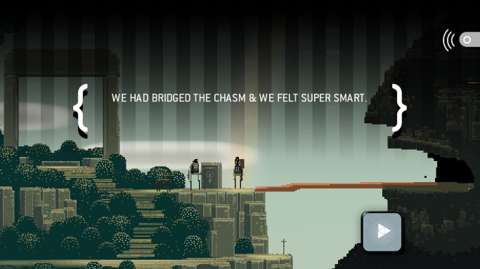
Generally, whenever the use of “sworcery” is required, it is for progress in the linear story of the game. Other than that, it is used for some silly side activity which will be described shortly. “Sworcery” is not actually a full gameplay element.
The in-game documentation does mention that the title of the game is influenced by fantasy pen-and-paper role-playing games, which has the cognomen of “sword and sorcery” games in some hobby circles. However, the player should not expect full-blown magical light-shows in this game like those in other fantastical games which treat magic as a source of firepower.
Rather, Sword & Sworcery conforms to the other typical use of magic, that of utilizing it for deus ex machina solutions for progress in the narrative of the story.
At the very least though, the “sworcery” segments have some stirring aural and visual presentations which would take the player many years to forget.
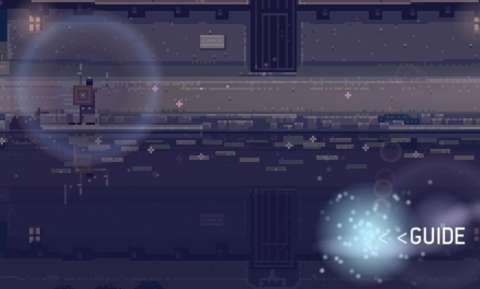
CRITTER-KILLING SILLINESS:
Magic is not exactly something which any creature can handle. The game will not tell the player about this, but in the case of the Steam version of the game, there are achievements which indirectly suggest this.
Players with lesser cleverness may think that the method to obtain these achievements actually involve the sword, but the sword is actually mainly there for combat with characters who are capable of fighting back.
Players who are curious about what other things “sworcery” can do may find out just what magic does to unsuspecting wild animals.
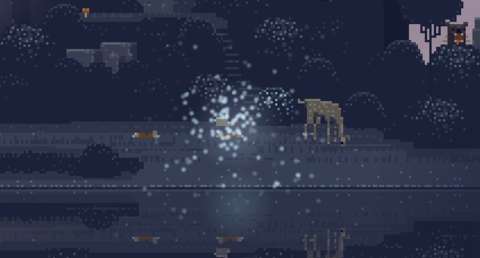
At first, this may seem like an entertaining use of “sworcery”. However, waiting for the magic to take deadly effect on animals can seem a chore. Fortunately, such activity is entirely optional – and superfluous.
HEALTH:
The Scythian is not an invincible warrior. She is mortal and can be knocked out in a fight. However, this does not result in a straight game-over; most enemies would somehow leave the Scythian alive, albeit badly injured.
To recover while on the move, the player must have the Scythian picking and consuming mushrooms. This has the temporary effect of partially obscuring the player’s view of the game with plenty of particle effects. In addition, a trippy soundtrack replaces whatever music was playing at the time. This lasts for slightly more than a minute. This can be hilarious the first few times around.
Capybara has also used mushrooms as puzzle-solving hints of sorts, according to tips given by the Archetype.

Mushrooms appear in the rocky and hilly lands surrounding Mingi Taw (which is the most prominent named locale in the game). They are not infinite in number, but there are more than enough of them around for thrifty and careful players. Observant players may also notice that they tend to appear where they are most useful.
Mushrooms reveal their presence with what sounds like electronic whistling, for lack of better words to describe them with. Furthermore, their small sprites flash whenever these sound clips play. The player should not have problems finding them.
Other than mushrooms, having the Scythian sit down somewhere where she can doze off also refills her health; this also happens to be used for sojourns into the dream world (which do not happen automatically, fortunately). There is also healing in combat through her shield, which will be described shortly.
SHIELD “SWORCERY”:
As mentioned earlier, combat in Sword & Sworcery can seem to be little more than quick-time events at times. Fortunately, there is one element in combat which helps alleviate this impression, though only a bit.
The Scythian’s magical knowledge apparently extends to more than just her use of her sword and her gauntleted hands. Her square shield is also magical, its magic apparently being that which heals her as she holds this up.
However, this magic is dispelled as soon as the shield is struck by any enemy. This means that it is useless in fights with recurring enemies, such as the ghost warrior.
Yet, the shield’s healing ability is more easily appreciated when the Scythian is being tested by the game’s take on the MacGuffin trope. This will be elaborated shortly.
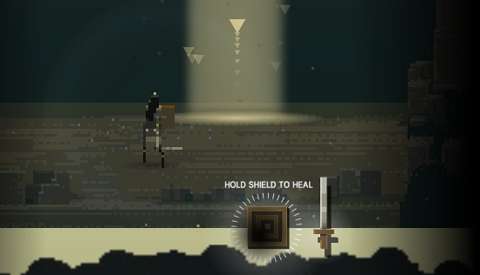
TRIGON TRIALS:
There are only a few types of enemies in the game, but the ones which the player would remember the most are the shiny and very angular MacGuffins which the Scythian has to collect.
However, they are not necessarily memorable because their fights are entertaining. Rather, if the player happens to despise quick-time events (QTEs), the “fights” with the Trigons can be especially aggravating because they are more akin to QTEs than most other fights.
This is because the player can, at best, merely react to what the Trigons are doing. They start off with long charge-up animations, which are made less boring because the player can use the shield’s healing ability to recover some health for the Scythian.
Later, they play a deadly game of bouncing magical projectiles back and forth, which requires timing on the part of the player. Then, the Trigon fires magical laser blasts, which are preceded by the shield icon flashing and which makes the fight seem even more like a series of QTEs.
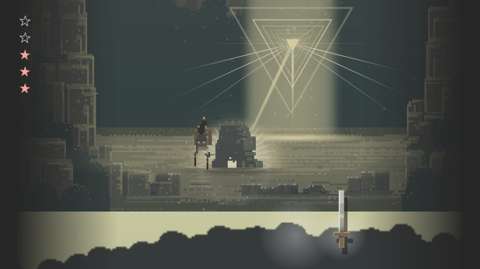
At best, the Trigon trials would be rewarding to players with a lot of patience. However, jaded players who have had more than their fair share of reflex-oriented gameplay may want to be forewarned about them; they will not be pleasant.
MOON CYCLES:
For better or worse, Sword & Sworcery is a game which makes use of the clock on the platform which it is on.
This is used for clock-dependent scripts which trigger the appearance of scenes which are needed to progress in the game at specific times. These occur in the third “session” of the game.
If the player did not manage to obtain a certain secret in the game, this session can only be completed in, at the shortest, half a month. This half a month includes a lot of waiting and checking the current date in the real-world.
Waiting is not what every player wants to do, so there is a cheating work-around for this – a work-around which the game is well aware of and will reward/punish the player for having made use of it.
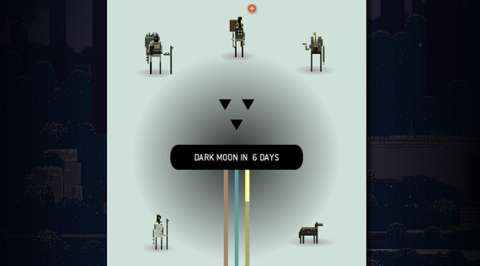
Yet, despite this built-in admonishment, there would still be detractors who mention that having to wait is not fun and that it breaks the immersion of the game. Therefore, fortunately, there is also a built-in mechanism to alter the moon cycles, specifically one of the game’s secrets.
There are quite a few other secrets in the game involving the moon cycles, so the player may want to consider either using this useful secret, or just cheat to get them.
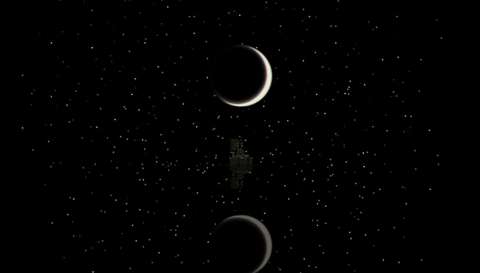
WRITING:
One of the most significant oddities of the game is its writing. It is not exactly well-written, at least not always. This is because it does not match the settings and themes of the game at times - often deliberately so.
This can be seen early on in how the Scythian refers to herself in the plural sense. This is followed by the lines which the characters supposedly utter: their lines are more akin to those spoken by popular-cultured Americans, not those of the Caucasus peoples in the Metal Ages. An example has been seen in an earlier screenshot in this review, where the word “thingamajig” is used.
Such mismatching presentation may seem to go against the game-maker’s claim that their game is influenced by their research on Eastern European history.
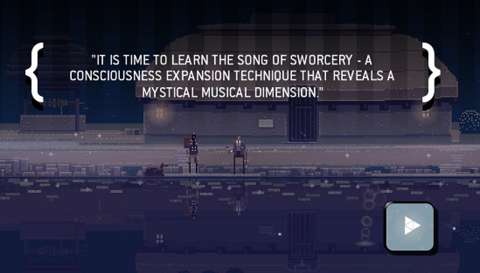
Other than that, there are a lot of alliteration and alterations of known sayings. One can argue that these increase the charm of the game, especially if the player has experienced so much clichéd story-writing that such deliberately odd writing can seem refreshing.
(Indeed, at the time of this game, there was a considerable deluge of over-used tropes in the stories of video games, especially in high-profile games.)
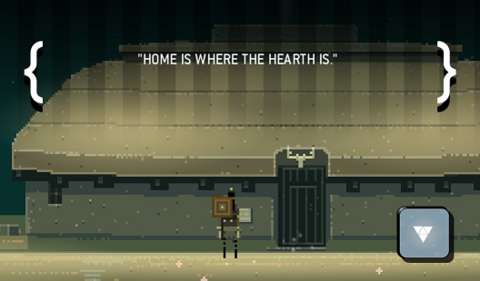
CHARACTER DESIGNS:
There are only a handful of characters in the game, but all of them are rather interesting characters, or at least are characters who do not belong to particularly well-known tropes.
The Archetype is the first character whom the player would come across. He’s essentially a fourth-wall-breaking character who even appears in the Scythian’s world (though his presence is not exactly acknowledged). He can seem very mouthy, but others would consider him to have some panache for making statements which are near-gibberish yet helpful.
The Scythian Warrior is next. As mentioned earlier, she speaks in a manner which is not exactly befitting a Scythian. In fact, she sounds a lot like a stereotypical American late teen. Fortunately, she is not a terribly irritating character, e.g. she would not utter the words “totally’ and “awesome” so frequently to the point of being obnoxious.
Then there is Dogfella, who is introduced very early on. Dogfella practically acts as a direction indicator, moving to where the Scythian needs to go to. Dogfella also shuffles and barks to get the player’s attention. Moreover, from the perspective of narrative, Dogfella is a mysterious dog.
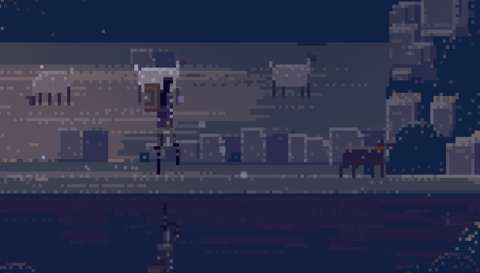
Then, there is the similarly named Logfella, who provide frequent reminders that resting at his home restores health.
After that, there are characters who may be tributes to people whom the creators of the game adored, such as André the Giant (a now-deceased pro-wrestling persona). Next, there are characters who appear to have been designed on the whims of the creators of the game when they were researching Caucasian mythical lore (and most of them talk like the Scythian does).
The most entertaining character is one whose presence in the game is not exactly mandated by the story. Its presence is given away by a very silly song which consists of nothing but grunts. It is also arguably one of the weirdest-looking characters seen in video games too.
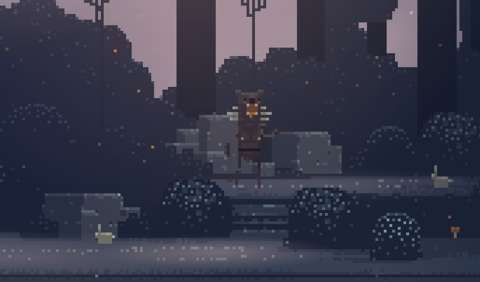
SOCIAL MEDIA INTEGRATION:
Sword & Sworcery was made during a time when social media tools have become very effective ways to build up hype for a game through word-of-mouth. Capybara has decided to include features which use Twitter in the game, specifically for the player to receive help on some of the more obtuse designs in the game, as well as to boast about the player’s progress.
For players who do not like to have their gaming experiences broadcast through social media, they may understandably have some trepidation when coming upon this for the first time. Fortunately for them, the use of these social media networking features is optional, and the buttons for them are tucked away somewhere where they would not obscure more immediately important things.
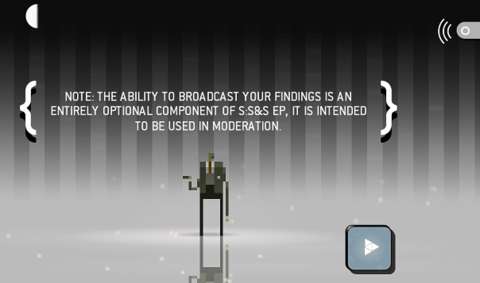
VISUAL DESIGNS:
If this is not apparent enough already by now, Sword & Sworcery makes use of pixel art – and whimsy too, as can be seen from the spindly limbs of the human characters in the game.
In hindsight, such a decision by Capybara made it quite the outlier during the time of this game, when most games on the mobile platforms either used 3D models or hand-drawn artwork for their visual designs. Even when it launched on the computer platform a year later, its visual designs were still a rarity.
Yet, perhaps due to its exemplary presentation, Sword & Sworcery was lauded for being different. Together with other games with minimalistic visual designs (e.g. Minecraft), this game contributed to a resurgence of pixel art graphics, now colloquially known as “retro graphics”.
Players who have a liking for such visual designs might just credit Capybara’s game for having started this ‘renaissance’ of sorts. However, for other people to whom graphical advancements are (somehow) essential, Sword & Sworcery would be among high-profile indie games which are blamed for setting the clock for video game graphics backwards.
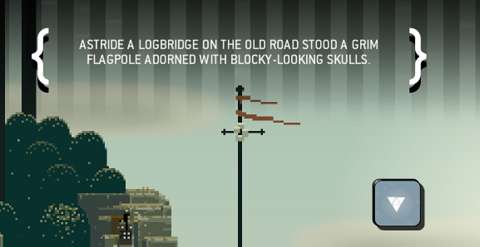
However, in this reviewer’s opinion, adequacy and practicality are the most important aspects of a game’s graphical designs. Sword & Sworcery is satisfactory in such matters.
To elaborate, the colour palette for the objects in this game is diverse enough to grant sufficient visual contrast between any object and another. Many inanimate objects are blocky in this game, especially the rocks, but they contrast well with less inorganic objects such as trees and animals, which have less sharp edges in their sprites.
Then, there are visual designs which are meant to be visual indicators of what is happening and what is important. Some examples have been mentioned earlier, such as the particle effects for scene transition zones.
Other examples include changes to the sprite for the Scythian as her health changes. When her health is reduced to below its starting amount at the beginning of the game, images of her sprite follow her around.
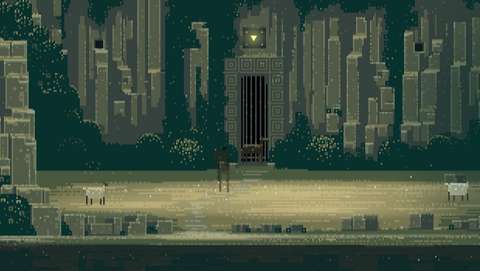
The lighting and particle effects of the game also deserve praise, if only because they make great distractions from the oddities of the pixel art graphics.
SOUND EFFECTS & MUSIC:
The audio of Sword & Sworcery is arguably its best aspect. It is composed by the surprisingly talented Jim Guthrie, who would go on to win considerable acclaim from the indie game communities.
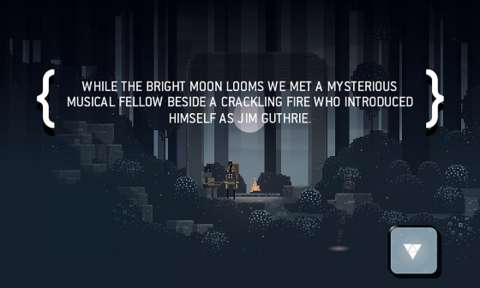
Guthrie’s mainly electronic music is surprisingly stirring – and this is made all the more surprising because he is better known for indie rock before this game. More importantly, during the time of this game, there were not exactly many games for the mobile platforms which have music as stirring as Sword & Sworcery’s.
Even when the game was published on the computer platforms in 2012, one year later, the music of Sword & Sworcery was (and still is) as fresh as it is varied.
Speaking of variety, there are many tracks, from the stirring track used for the prologue (e.g. “Dark Flute”) and the ominous ones for the foreboding ruins of Mingi Taw (e.g. “Doom Sock”) to the playful tunes when the Scythian has eaten a mushroom and the grippingly suspenseful tracks for the show-downs with the Trigons.
Most of the sound effects which are heard in the game are practically part of the music. The most prominent of these are the melodious flourishes emitted by the creatures known as “sylvan sprites”.
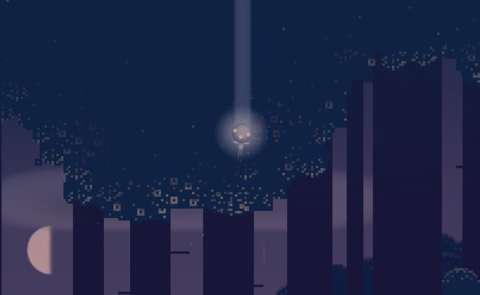
Then there are the sound effects which are associated with the presence of important things, such as the twinkling noises which accompany the emission of bubbles from where the sprites are hiding. Indeed, it would be difficult for a player not to eventually learn to identify the presence of such things through keeping an ear open for their associated sound clips.
VOICE-ACTING:
Most characters communicate through text which appears on-screen, so one might think that there would not be much voice-acting in the game. However, there is, and not all of it is for the betterment of the game.
Firstly, there is the voice-acting for the Scythian. Much of it is illegible grunts and groans, mostly used for combat. There is perhaps a single legible utterance, but it is so short that it could have been gibberish.
Secondly, there is Jim Guthrie’s recorded statements. These are played whenever the player character comes close to either Logfella or Jim Guthrie’s in-game persona. Yet, the problem is that many of these lines seem out of place. There are some appropriate ones, such as Logfella or Guthrie remarking that whoever he is addressing is not talkative.
However, when the player hears Guthrie talking about new places “downtown” – and this game certainly does not take place anywhere near a city – there is the suspicion that Guthrie may have been unwittingly recorded by other people or perhaps he himself.
Last, but not least, is the amusingly weird song which is composed of grunts by, ostensibly, Jim Guthrie himself. Although this could be considered as “part” of the game’s music, curiously enough, it is not included in the official music album for the game. This reinforces the aforementioned suspicion further.
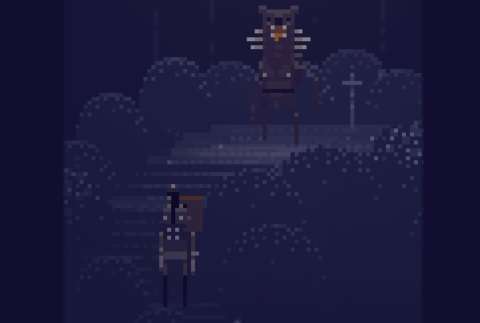
MOUSE STROKE BUG:
During this reviewer’s second playthrough of the game, there was a bug which occurred during one of the puzzles, specifically the one involving the use of ‘sworcery’ on waterfalls.
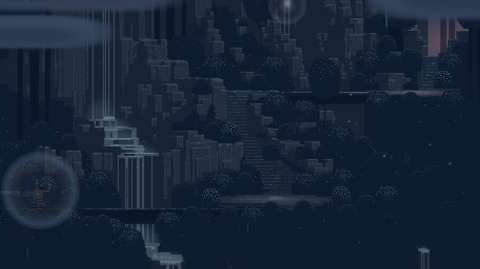
POSSIBLE LOSS OF OPPORTUNITY TO MISS OUT ON SECRETS:
Although Capybara is a developer with many ideas, they have not thought of everything.
There may be a chance that the player might miss out on meeting one of the characters of the game, namely the Grizzled Boor, if the player has started playing the game on a date where the game registers the Dark Moon period of the moon cycles.
To be specific, if the player has obtained the MacGuffin which is associated with this segment of the game before meeting this character, one of the locales which is associated with this character will be altered such that the meeting with this character will never happen.
ONLY ONE SAVE-FILE:
For whatever reason, the game has only ever a single save-file, which is overwritten whenever the player makes progress in the story.
This is not particularly convenient for players who want to re-visit specific sessions in order to obtain certain secrets in the game.
To do so, the player will need to clear his/her playthrough data, essentially wiping out any progress which he/she has made.
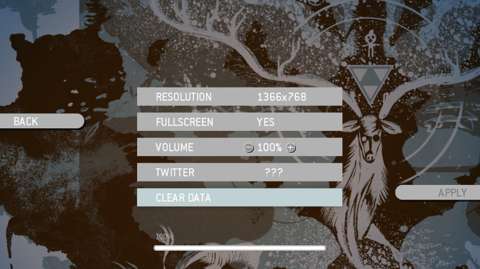
CONCLUSION:
Sword & Sworcery was a game which was ahead of its time – that is, if one is to consider that when it debuted, it was a rare gem among a plethora of games with clichéd gameplay and settings.
However, it is not so alone now, and it does not stand up to harsh, harsh hindsight, especially after its glamour of being different from the rest had since faded away. With that, the game’s reliance on splendid presentation over sophisticated gameplay becomes very evident.
It has set off a trend in which artful expression is prized over advancement in gameplay sophistication, especially in the indie scene, which could have amounted to something more.
Granted, this is not a very kind appraisal of Capybara’s game, which had undeniably impressed a lot of people during its time. To give the game some kudos, it does reward the player who played through it with something which many games just do not do: an unforgettably stirring experience.
